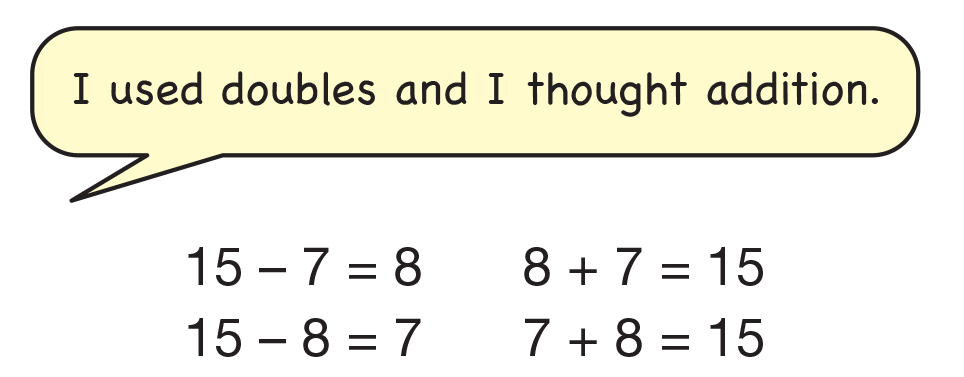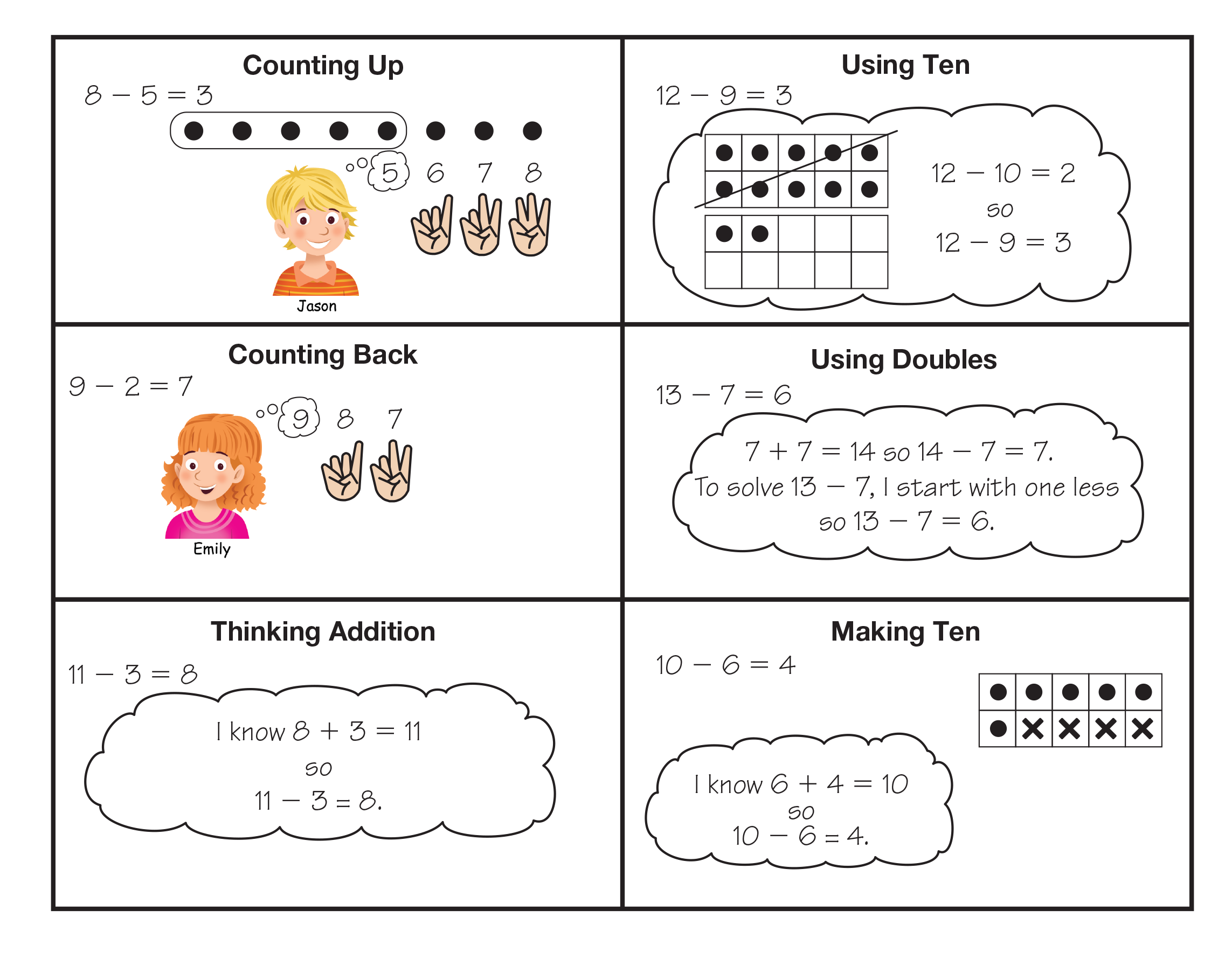Strategies for Subtraction Facts
Est. Class Sessions: 2–3Developing the Lesson
Part 1: Revisiting the Subtraction Strategies Menu for the Facts
Subtraction Strategies for the Facts. Remind students that earlier in the year they sorted subtraction facts into two categories: Counting Strategies and Reasoning Strategies. For today’s lesson, students will use the Subtraction Strategies Menu for the Facts in the Student Activity Book Reference section to sort subtraction facts into six categories: counting up, counting back, making ten, using ten, using doubles, and thinking addition. Use a display of the Subtraction Strategies for the Facts page to review each of the subtraction strategies.
Display the 6 sheets of chart paper and the
Show Your Strategy Cards with the facts 12 − 10, 10 − 4, 7 − 2,
7 − 5, 14 − 7, and
15 − 7. See Materials Preparation.
Focus students’ attention on the displayed cards and
ask students to explain how they would use each of the
strategies to solve the displayed problems. As students
give their explanations, post the subtraction fact on the
chart that matches the strategy.
Ask:
Demonstrate how to write the four number sentences in the same fact family as 15 − 7 on a display. See Figure 3.
Explain to students that there may be more than one strategy for solving each of the problems but the goal is to use a strategy that will help them solve the problem quickly and accurately. For example, to solve 15 − 7, students could use the strategies counting back, counting up, using doubles, or thinking addition. Explain that counting back is a good strategy to use if they are subtracting small numbers and counting up is a good strategy to use if they are subtracting two numbers that are close to each other.
Sort Subtraction Facts. Have students work in pairs to discuss strategies for the remaining subtraction facts you prepared on the Show Your Strategy Cards Master. Give each pair 4–5 cards. Encourage students to refer to the Subtraction Strategies Menu for the Facts in the Student Activity Book Reference section before they solve each problem. If some pairs finish early, give them additional facts to solve. Ask each pair to solve the subtraction facts and show their strategy on the number line and ten frames on the strategy cards. As pairs complete their cards, have them attach the cards to the chart that corresponds to the strategy that they think is most efficient for solving the problem.
As students work on the strategy cards, ask questions such as the following:
Discuss Subtraction Strategies Charts. Upon completion, direct students’ attention to the strategy cards on the six charts. Ask students to look at the facts on each chart and write down subtraction facts they would like to move to another chart. As a class, discuss the placement of the subtraction facts on the six charts.
Ask:
Have students move strategy cards to a different chart if they find more efficient strategies for solving the problems. Ask students to explain how they would use the strategy to solve the problem. Remind students that they should use strategies that are efficient and make sense to them and that some subtraction facts can be solved efficiently using more than one strategy.















